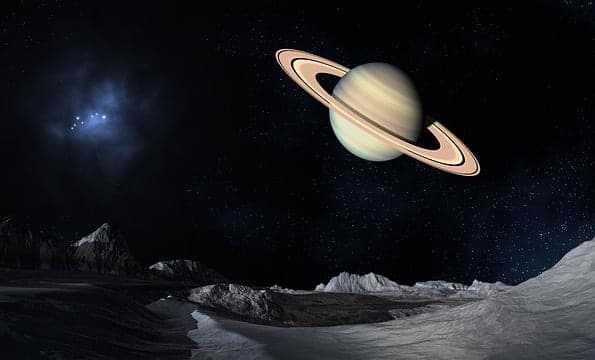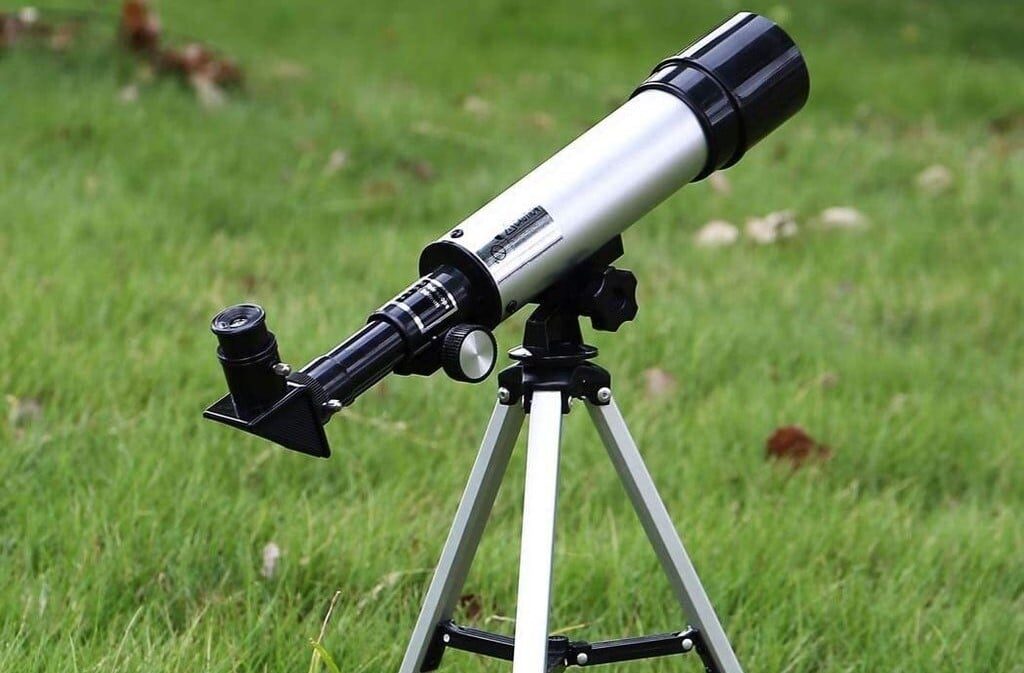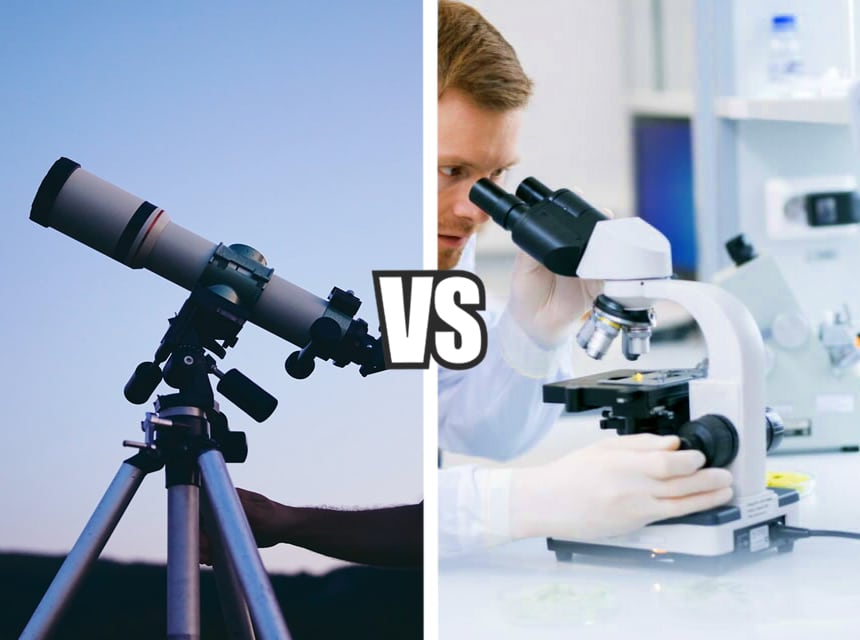

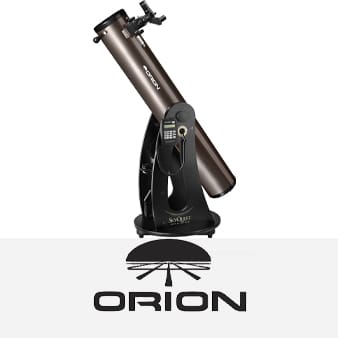
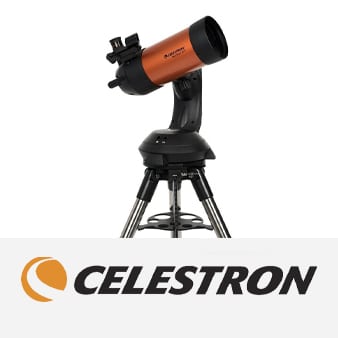
There are several different brands making quality telescopes but if you’re looking for the best, you’re likely going to choose either Orion or Celestron. These two companies create some of the top telescopes on the market, as well as the accessories needed to enhance your astronomy skills. Of course, they are not identical in every way, which has many people comparing Orion vs Celestron to see which one is best to suit their needs. For more information on what these brands have to offer, check out our comparison sections below.
If you’re going to compare Orion vs Celestron, it’s a good idea to look at the brand as well as the products. The following sections cover the history of both of these companies, as well as their manufacturing processes and what types of products they have available to their customers.
Orion was founded by Tim Gieseler in 1975 in Santa Cruz, California. They sold telescopes, binoculars, and accessories until 2005 when they were purchased by Imaginova, at which time they also added a variety of non-Orion products to their catalog. In 2017, Orion was bought back by its employees, who focus on selling the best quality products possible with high attention to customer care.
As for Celestron, the owner and President of Valor Electronics, Tom Johnson, added an Astro-Optical division to his company to allow them to make telescopes in the early 1960s. Though they accomplished this goal, it wasn’t until 1970 that their telescopes became top sellers on the market. Their best-seller, the C8, was a compact model with a great low price but still a high-quality item that gained a great deal of attention. Celestron has continued to update and improve its models, adding several more to its arsenal, as well as a variety of other items that help them maintain their foothold in the scientific world.
Although both of these companies started in California, their products are not manufactured in the United States. Orion’s telescopes and other products are manufactured in China, while Celestron products are all manufactured in Taiwan.
Though Orion is best known for their telescopes, they also produce a variety of accessories for their products, like tripods, cases, and even binoculars. They also have items available at varying prices for any skill level, so beginners and pros can all shop at the same place without sacrificing their needs. They carry Cassegrain, Dobsonian, refractor, reflector, and even kids telescopes.
Celestron also has a variety of telescopes for beginners, as well as intermediate and advanced astronomers. These come in a range of prices, so you can spend as much or as little as you like. This company offers many different Schmidt-Cassegrain telescopes, as well as refractor and reflector telescopes. You can also find mounts, tripods, binoculars, scopes, microscopes, and many other items and accessories.
| Orion SkyQuest XT6i | Celestron NexStar 4SE | |
| Level | Advanced | Advanced |
| Type | Dobsonian | Cassegrain |
| Magnification | 300x | 240x |
| Focallength | 47.2 in | 52.17 in |
| Focalratio | 8.0 | 12.99 |
| Objectiveaperture | 6 in | 4.02 in |
| Tubelength | 45.5 in | 13.5 in |
| Weight | 13.5 lb | 11 lbs |
| Warranty | 1-yearlimited | 2-year limited to lenses, 5-year limited to exterior, optical system lifetime limited |
| VIEW ON AMAZON | VIEW ON OPTICS PLANET |
If you’re looking for a great telescope, there are several to choose from with these brands. The Orion SkyQuest XT6i and the Celestron NexStar 4SE are popular choices from these companies, though they aren’t identical in what they have to offer.
Even expert astronomers don’t want to struggle to use their telescopes. Luckily, the models available these days make them easy to use, though some are more user-friendly than others. Both of these models have an abundance of features that allow even beginners to get the hang of them in no time. The Orion SkyQuest XT6i includes an IntelliScope Computerized Object Locator, which shows you the coordinates of any object in the sky Trusted Source This Week's Sky at a Glance, September 10 – 18 - Sky & Telescope - Sky & Telescope The essential guide to astronomy skyandtelescope.org for quick location.
The Celestron NexStar 4SE takes this a bit further, allowing you to choose an object in the menu for the telescope to locate on its own. It even has a Tour function that gives you a guided tour of the best objects for the time and location you’re at.
These two telescopes are quite close in price at just under $500 each, so you can choose the one you like best without having to spend more money than you’re comfortable with. The Celestron does cost more if you want extra accessories, some of which the Orion already includes with their model.
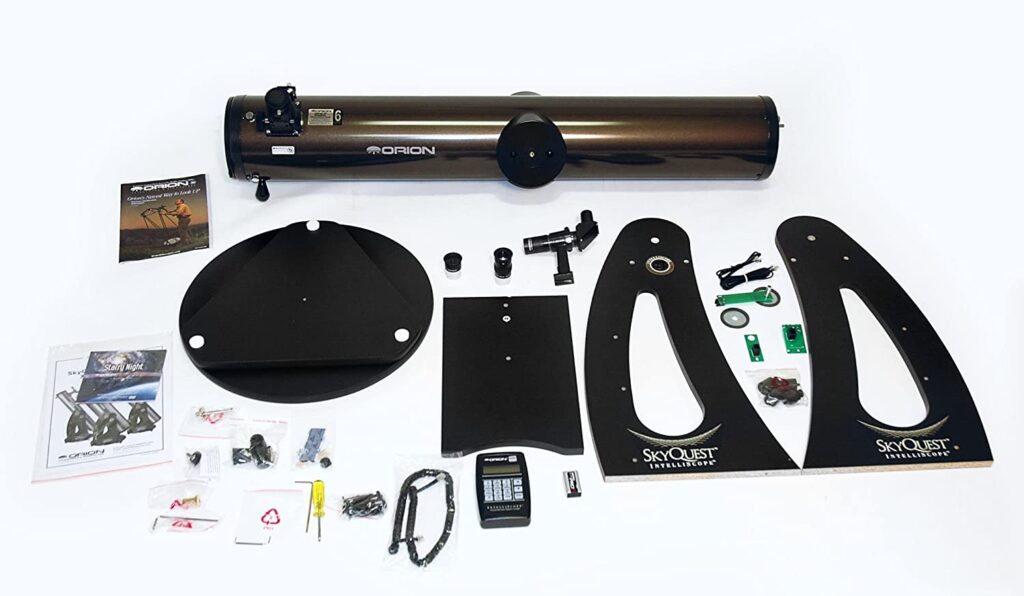
The Orion model includes 2 Sirius Plossl 1.25-inch eyepieces, a finder scope, a 1.25-inch rack and pinion focuser, an eyepiece rack, a collimation cap, and their Starry Night software. The Celestron model includes their telescope only, though if you like, you can upgrade to their accessorized model, which includes a finder scope, camera shutter cable, 25mm eyepiece, tripod, and their astronomy software. This does add another $55 to the price, though, so keep this in mind.
When it comes to the magnification, Orion’s is a bit higher with its lowest useful magnification at 28X and its highest useful magnification at 300X. Celestron offers the lowest useful magnification at 14X and the highest useful magnification at 240X.
The Orion SkyQuest XT6i has an objective lens diameter of 152 mm, while the Celestron NexStar 4SE has an objective lens diameter of 102 mm. This means that the Orion model allows more light in to create a brighter image.
The focal length of the SkyQuest XT6i is 1200mm. When combined with the width of the lens, this gives it a focal ratio of f/8. The Celestron model has a focal length of 1325mm, so it has a focal ratio of f/13.
For the viewfinder, the Orion SkyQuest XT6i uses a 6×30 correct-image, right-angle finder scope, which is included with the telescope. The Celestron NexStar 4SE uses a Starpointer finder scope, though you do need to purchase the accessories package to get it.
The optical tube on the Orion model has a length of 45.5 inches and a weight of 13.5 pounds. Of course, when the telescope is fully assembled, it is much heavier at about 34.4 pounds, so you likely won’t want to move it around more often than necessary.
The Celestron NexStar 4SE is a much smaller model, with an optical tube length of 13.5 inches but isn’t much lighter at 11 pounds. The tripod and mount add another 10 pounds to the weight, making it a lighter model than the Orion telescope.
Though the models we reviewed above are the most popular options available from these two brands, there are several other high-quality telescopes to choose from. Let’s take a look at a few others offered by Orion and Celestron.
The SkyQuest XT4.5 is a Classic Dobsonian reflector telescope, with a sturdy base and easy-to-use navigation knob for simple maneuvering, even for beginners. It comes with some handy accessories, including both 25mm and 10mm Sirius Plossl eyepieces, a rack and pinion focuser, a collimation cap, an eyepiece rack, and Orion’s Starry Night astronomy software.
The two eyepieces included with this Orion telescope give you two field of view options, depending on what you want to see. The 25mm eyepiece gives you 36x power magnification for wider views of the sky, while the 10mm eyepiece offers 91x power magnification for closer views of specific objects. Both of these eyepieces are fully coated and threaded to use with various Orion filters for enhanced views.
The focal length of the Orion SkyQuest XT4.5 is 900mm, with a focal ratio of f/7.9. Though it doesn’t have a huge field of view, it offers higher magnification than some other models.
This reflector telescope from Orion uses an objective lens made of low-thermal expansion borosilicate glass with an optical diameter of 114mm.
Those looking for portability in their telescope will love the Orion SkyQuest XT4.5 model. It is compact, with an optical tube length of only 35 inches, so it can fit almost anywhere. It is also lightweight at 17.6 pounds, so it is easy to pack up and take with you wherever you need it. It even has an integrated carry handle, so you can pick it up easily whenever you like.
The Orion GoScope II is designed to be used by those who like to take their stargazing on the road. It is compact, lightweight, and includes everything you need to check out the stars wherever you are. Best of all, it has a great low price that can fit into any travel budget.
Like many of the other Orion telescopes available, this one includes two 1.25-inch eyepieces. The first is 25mm, giving you a magnification power of 16x, while the 10mm eyepiece offers 40x magnification power. There is also a 5×24 finder scope, which makes it easy to aim your telescope at anything you want to look at.
The focal length of the GoScope II is 400mm, with a focal ratio of f/5.7. This allows you to use your telescope in the day for some birdwatching or wildlife viewing as well as nighttime use for checking out the stars, planets, and other cool celestial bodies.
The objective lens on this telescope from Orion has a 24mm diameter on the 5 x 24 finder scope, giving it a 5x power magnification to make it easier to aim the telescope at the objects you want with ease.
The Orion GoScope II is a travel telescope, so it is built with portability in mind. The telescope itself is compact, plus it includes a lightweight aluminum tripod and a rugged backpack to hold all of the pieces and accessories included with this model. As well as those on the go, this lightweight model is perfect for kids who want to learn astronomy without too much difficulty.
Designed for beginner and intermediate astronomers, the Orion StarBlast II 4.5 Astro Reflector Telescope comes fully assembled, so there is almost no setup needed. You can pull it out of the box and start stargazing almost immediately. It also includes a stable tabletop base, so you can set it up wherever you have the space for it.
There are two Explorer II 1.25-inch Kellner eyepieces included with this telescope. The first is 17mm, giving you 26x magnification power for a larger window of sky to gaze at. There is also a 6mm eyepiece for 75x magnification, offering closer views and more detail of specific objects in the night sky.
The focal length of the Orion StarBlast II 4.5 is 450mm, with a focal ratio of f/4.0. Though this keeps the telescope short and compact, it still offers a wide field of view with a crisp, bright image for you to enjoy.
The objective lens has an optical diameter of 114mm and is made of low-thermal expansion borosilicate glass.
The base of the StarBlast II 4.5 includes a built-in carry handle, so you can pick up your telescope and take it wherever you like at any time. It is also lightweight at about 13 pounds, so taking it with you for some travel stargazing is quick and easy. The compact size is also handy since this little model fits almost anywhere you have space.
The Celestron Travel Scope 70 is a lightweight telescope that is perfect for those wanting to check out what’s in the sky and all around them everywhere they go. This model is easy to set up in only a few minutes, with an adjustable tripod and Alt-Azimuth control for smooth and accurate tracking of any object you point it at.
Included with the Celestron Travel Scope 70 are two high-quality eyepieces. The first is 20mm, giving you 20x magnification power for wider views of the sky or anything else you happen to be looking at. The second eyepiece is 10mm, doubling the magnification to 40x for closer inspection of those craters or rings on specific celestial objects.
The focal length of this Celestron telescope is 400mm, which gives you a focal ratio of f/5.7 for a wide field of view that lets you see more of the sky at any given time.
This refractor telescope includes a 70mm aperture objective lens, which gives you amazingly enhanced views that are much brighter than previous models without adding too much extra weight to this model.
When fully assembled, the Travel Scope 70 weighs only 3.3 pounds, making it one of the lightest telescopes available. It also includes a custom backpack that holds the optical tube, tripod, and everything else that comes with this telescope, so you can take it with you wherever you go without having to leave any important pieces behind. Whether you’re traveling by car or hiking your favorite trails, this telescope is easy to take with you.
Though it costs over $1000, the Celestron NexStar 8 SE telescope may be well worth the price. It includes fantastic features, like computerized hand control, a motorized altazimuth mount, StarBright SLT enhanced coatings, and SkyAlign for quick and easy alignment. It is also GPS compatible, with NexRemote control software for advanced controls using your computer, and “The Sky” Planetarium software.
Included with this Celestron telescope is a 25mm eyepiece, which offers a magnification of 81.28x and a linear field of view of 33 feet at 1000 yards.
The focal length of the NexStar 8 SE is 2032mm, with a focal ratio of f/10. Though the higher focal ratio means this model has a narrower field of view than some other telescopes Trusted Source NASA Readies James Webb Space Telescope for December Launch | NASA NASA plans to launch the James Webb Space Telescope into orbit Dec. 18, 2021, to serve as the premier deep space observatory for the next decade. www.nasa.gov , it will be much clearer at higher magnification, giving you clearer views of everything you see.
The objective lens of this Celestron telescope is 203.2mm, giving you a full 8 inches of aperture for even better light-gathering capabilities. This allows you to see even the smallest details on those far-away celestial objects, including the rings of Saturn or Jupiter’s cloud bands.
Though the Celestron NexStar 8SE is heavier than some other models at 24 pounds, it is still light enough that you can move it easily, even if you like to travel with your favorite telescope. It also includes a few features that increase its portability. These include the single fork arm mount design that is easy to set up and take down whenever needed and the durable steel tripod that breaks down into smaller pieces for a more compact package. Even in the smallest vehicles, the NexStar 8SE will fit perfectly, so you can stargaze anywhere you like with ease.
The Celestron AstroMaster 130EQ-MD is easy to set up since it needs no tools for the process, plus it has a ton of great features that make it one of the top products this company sells. One of these is the RA motor drive, which turns the German equatorial mount into a tracking mount, allowing the telescope to track specific objects across the sky automatically. The adjustable steel tripod, deluxe accessory tray, and Starry Night Basic Software are also handy additions to this already amazing telescope.
There are two eyepieces included with the AstroMaster 130EQ-MD. The first is a 20mm eyepiece, which includes a built-in erect image corrector and offers magnification power of 33x. There is also a 10mm standard eyepiece that boosts the image to 65x the magnification for closer views of anything you want to see in the sky.
The focal length of this telescope is 650mm, with a focal ratio of f/5. This ensures that you’re getting a wide field of view of the night sky with bright images that you can see as clearly as possible.
The objective lens on the Celestron AstroMaster 130EQ-MD is 130mm. This allows you to see those faint objects in the sky in greater detail than you would with a telescope with a lower aperture.
This telescope isn’t the most portable model available, though this doesn’t mean that you can’t travel with it if you really want to. It is easy to assemble and disassemble whenever needed, with no tools required. There isn’t a carry case included, so you will likely want to get a bag or plastic bin to keep the telescope, tripod, mount, and all of the other accessories safe and organized wherever you go. It isn’t the lightest model available, either, with the tripod alone weighing over 7 pounds, so for regular travel use, you may want a more compact, lightweight model. For occasional use away from home, this one will do nicely.
There are several great telescope brands out there but for those who really take their astronomy seriously, there are two brands that spring to mind first, namely Orion and Celestron. Though both of these brands offer some great telescopes, as well as a variety of other products and accessories, they are not identical, which may have you leaning toward one or the other in the Orion vs Celestron debate.
Celestron is best known for its C8 telescope, which is one of the most popular and longest-selling models ever made. They also have a variety of other great telescopes available, as well as some amazing tools and accessories to choose from. Orion is also known for its high-quality telescopes, with beginner and pro models available, as well as everything in between. Their customer service is also exceptional, ensuring little hassle if your telescope isn’t living up to your expectations.
